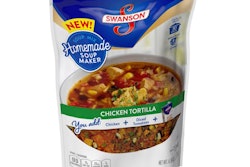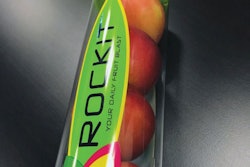
What are some of the greatest changes you have seen in CPG consumer expectations and purchasing habits over the last several years?
Robby Martin: Clearly, one of the biggest changes we all face is the changing buying/shopping habits of consumers. Whether it involves shopping the perimeter of traditional retail stores more often due to time constraints or the perceived freshness of the products there, or the use of technology to do routine and repetitive shopping, consumers do things differently today. Interestingly, consumers show some fondness for the new and different and for the traditional products they’ve known from their years of shopping the center of the store.
Packaging World: How have these changes affected Bush Brothers and its established processes and methodologies?
Robby Martin: Originating as a regional canner in the early 1900s, Bush Brothers continues to provide quality, great-tasting products to the marketplace primarily through traditional channels in traditional packages. But strategically, we understand our future may ultimately include alternative packages and alternative product forms. So, we continue to focus on the things we think we do really well, while also taking a purposeful look at what we may need to be able to do in the future.
Packaging World: What is Bush Brothers doing to address these challenges?
Robby Martin: We have broadened our innovation portfolio in recent years. We’ve prototyped and tested a variety of products at an increased rate over the last four to five years. In learning to do more in this area, we’ve learned to recognize differing levels of business and product design risk, while being very careful to protect the food safety and quality aspects of our products.
Packaging World: As a manager, what strategies are you using to guide your project teams during this transition?
Robby Martin: One of the biggest shifts for us in investigating new channels, packages, product forms, etc. has been to become comfortable with a lower level of certainty about what we believe to be true. Said another way, we’ve learned to think more openly about our assumptions. Again, food safety is non-negotiable, but package type, flavor selections, etc. can all be somewhat less perfect within a more aggressive innovation arena. So, one of my biggest roles has been to help our teams understand appropriate levels of risk. Where we once worked really hard to answer all of the questions we could think of during a project, we’ve begun to learn to focus more on the next set of questions to answer within a given project.
Packaging World: What role should packaging materials and equipment suppliers play in helping companies such as Bush Brothers meet changing consumer preferences?
Robby Martin: Suppliers play many critical roles in the innovation process. Materials development, package features, and equipment flexibility have all been areas where we rely on suppliers to be the experts. Suppliers that provide resources and options for building in consumer feedback and manufacturability concerns while we design new solutions provide the most value to organizations such as ours.






















